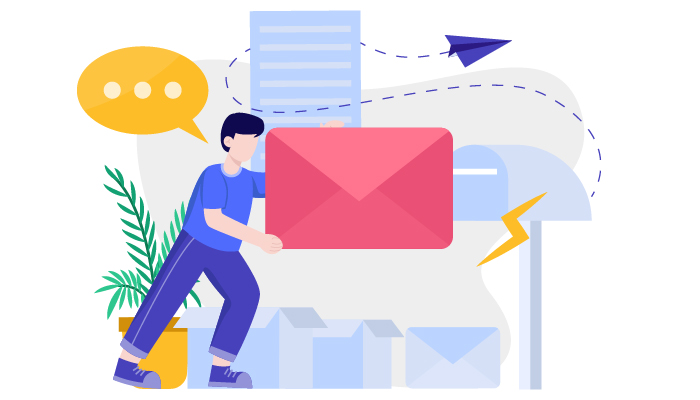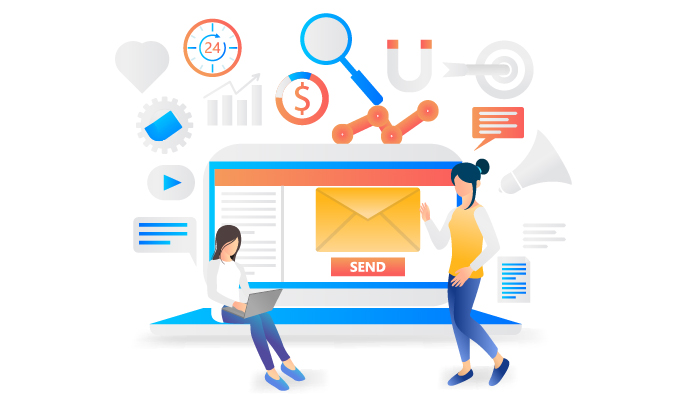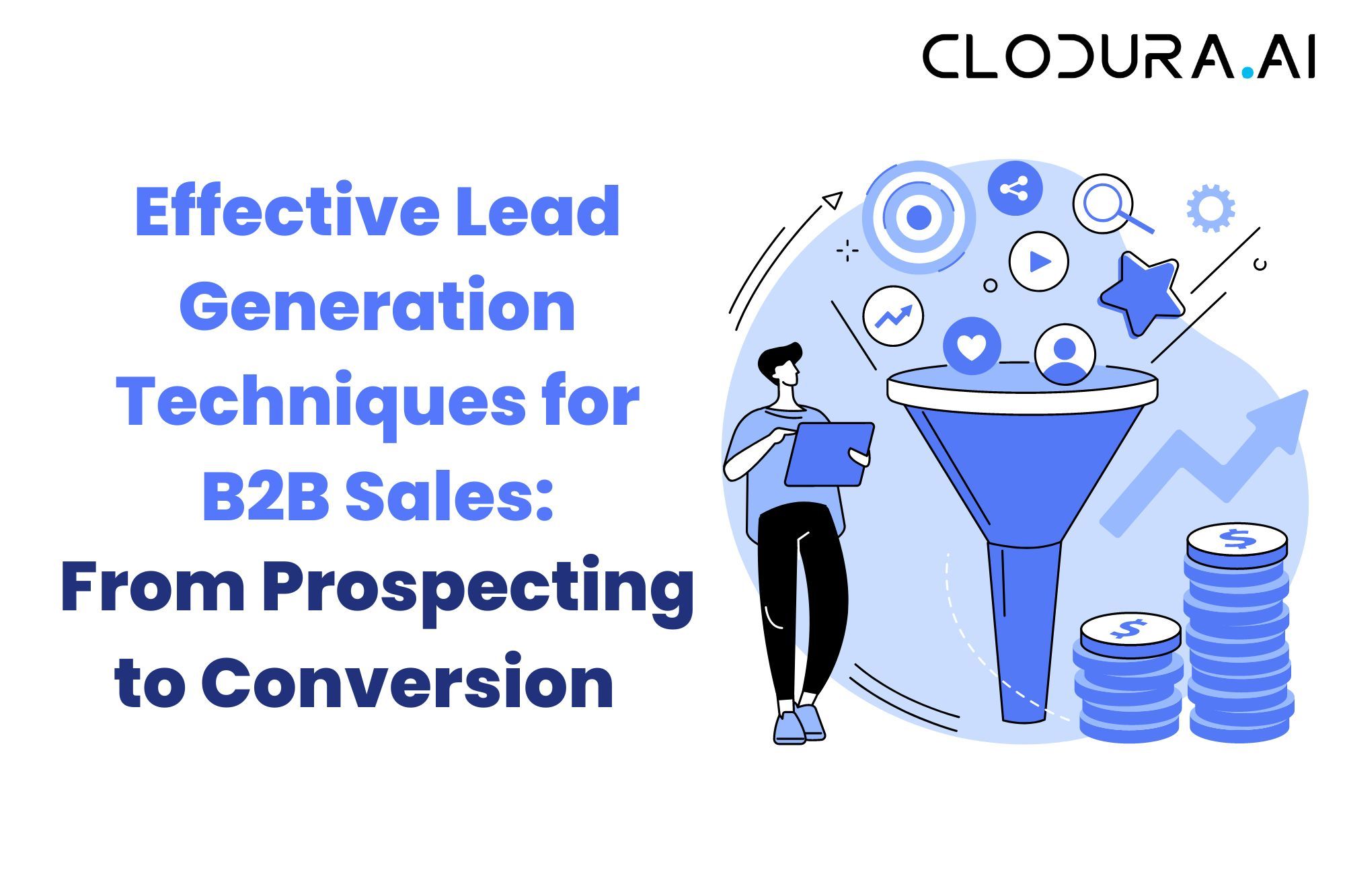Generating leads is crucial for the success of any business, especially for B2B sales. However, the process of lead generation can be complex and challenging. From prospecting to conversion, there are several stages involved that require specific techniques and strategies.
This blog will explore effective lead generation techniques for B2B sales and guide you through the processes necessary to succeed.
How to Generate leads in sales? Answered by Kapil Khangaonkar-Clodura.AI
Leveraging Social Media for Lead Generation
Social media has become an integral part of our lives, and its impact on businesses cannot be overstated. With millions of users active on social media platforms such as LinkedIn, Twitter, and Facebook, it has become a potent tool for B2B lead generation.
However, not all social media channels are created equal, and as a B2B marketer, you need to identify which platforms your target audience is most active on and utilize them effectively.
LinkedIn is a great platform for B2B lead generation, as it is a professional networking site where businesses and professionals connect. You can use LinkedIn to build your brand, connect with potential customers, and establish yourself as a thought leader in your industry. Posting relevant and engaging content regularly can help you attract leads and build your network.
Additionally, LinkedIn offers paid advertising options that allow you to target specific audiences based on job title, industry, and other demographics.
Twitter is another platform that can be used for B2B lead generation. With its fast-paced nature, Twitter allows you to engage with your audience in real-time and participate in industry-related conversations. You can use Twitter to share industry news, promote your content, and connect with potential customers. Hashtags are an effective way to increase the visibility of your tweets and reach a wider audience.
Facebook may not be the first platform that comes to mind when you think of B2B lead generation, but it can still be a useful tool. With over 2 billion active users, Facebook offers a large audience that you can target with paid advertising. You can also use Facebook to build your brand, share your content, and engage with your followers.
Facebook groups are a great way to connect with potential customers and establish yourself as a thought leader in your niche.
Engaging with your followers and actively participating in industry-related conversations and groups is essential to establishing yourself as a thought leader in your niche. By providing valuable insights and information, you can build trust with your audience and position your brand as an authority in your industry.
Remember, social media is not just about promoting your products or services; it's about building relationships and providing value to your audience.
In conclusion, social media can be a powerful tool for B2B lead generation if used effectively. By identifying the right platforms, posting relevant and engaging content, and actively engaging with your audience, you can attract leads and establish your brand as a thought leader in your industry.
Using Inbound Marketing Strategies to Draw Customers In
In today's highly competitive business environment, it is crucial to have a comprehensive marketing strategy that can help you attract and retain customers. One of the most effective ways to do this is by using inbound marketing strategies.
Inbound marketing is a customer-centric approach that focuses on creating valuable content that can attract potential customers to your website. By providing useful information that is relevant to your target audience, you can establish your brand as an authority in your field and build trust with potential customers.
One of the key components of inbound marketing is content creation. By creating high-quality content such as blogs, e-books, whitepapers, and webinars, you can provide your target audience with valuable information that can help them solve their problems and make informed decisions.
Another important aspect of inbound marketing is search engine optimization (SEO). By optimizing your website for search engines, you can improve your visibility in search results and attract more organic traffic to your website.
...jpg)
This can help you generate more leads and increase your chances of converting them into customers.
Email marketing is another effective tactic that can help you nurture leads and convert them into customers. By sending targeted and personalized emails to your subscribers, you can provide them with relevant information and keep them engaged with your brand.
When creating content for inbound marketing, it is important to ensure that it is relevant, valuable, and tailored to your target audience. By understanding your customers' needs and interests, you can create content that resonates with them and helps them solve their problems.
Overall, inbound marketing is a highly effective strategy for attracting and nurturing leads. By creating valuable content, optimizing your website for search engines, using social media, and implementing email marketing, you can increase traffic to your website and generate high-quality leads.
So, start implementing inbound marketing strategies today and watch your business grow!
Crafting the Perfect Follow-up Email
After you have generated leads, the next step is to nurture them effectively. Follow-up emails are one of the best tools for converting leads into customers. Crafting the perfect follow-up email involves several steps, including personalization, relevance, and timing.
Personalizing your emails is crucial. It's no secret that people respond better to messages that are tailored to them. Make sure to address the recipient by name and use their company name in the subject line. This will not only grab their attention but also make them feel valued and appreciated.
When crafting your email, it's important to keep in mind the recipient's needs.
What are their pain points?
What challenges do they face?
Addressing these issues in your email will show that you understand their situation and are there to help.
Another key factor in crafting the perfect follow-up email is timing. Sending your email at the right time can make all the difference. You don't want to send it too soon or too late. Sending it too soon may come across as pushy, while sending it too late may cause the recipient to lose interest.
One strategy for timing your follow-up emails is to use data. Many email marketing platforms offer analytics that can help you determine when your recipients are most likely to read your emails. This information can help you schedule your emails to be sent at the optimal time.
Another strategy is to consider the recipient's schedule. If you know that they work in the morning, it may be best to send your email in the afternoon when they have more time to read and respond.

Finally, crafting the perfect follow-up email involves personalization, relevance, and timing. By taking the time to tailor your message to the recipient's needs and sending it at the right time, you can increase your chances of converting leads into customers.
Capitalizing on Networking Opportunities
here are some tips on how to capitalize on networking opportunities:
● Set a goal
What do you want to achieve by networking? Do you want to generate leads, learn about new trends, or simply build relationships? Having a clear goal in mind will help you focus your efforts and make the most of your time.
● Be prepared
Bring business cards, promotional materials, and engaging conversation starters. Be dressed professionally and be prepared to answer questions about your business.
● Be personable and approachable
Smile, make eye contact, and be genuinely interested in the people you meet. Take the time to get to know them and their needs.
● Follow up promptly
After the event, send a thank-you note to everyone you met. This will help you stay top-of-mind and make a good impression.
Here are some additional tips:
● Do your research
Before you attend an event, take some time to research the speakers, attendees, and sponsors. This will help you make the most of your time and connect with the right people.
● Be yourself
Don't try to be someone you're not. People can spot a fake a mile away. Just be yourself and let your personality shine through.
● Don't be afraid to ask for help
If you're not sure how to approach someone or what to say, just ask for help. There are plenty of people at networking events who are happy to help you out.
● Have fun!
Networking should be enjoyable. If you're not having fun, you're not going to be as successful. So relax, enjoy yourself, and make some new friends.

Networking can be a great way to generate leads, learn about new trends, and build relationships. By following these tips, you can make the most of your networking opportunities and achieve your goals.
Utilizing Automated Lead Qualification Processes
Automated lead qualification processes involve using software to analyze leads based on pre-defined criteria and data points.
This process can save you time and effort by qualifying leads quickly, allowing you to prioritize your efforts on high-quality leads.
Additionally, these tools can help you track and evaluate the behavior of potential customers, providing you with insights into their interests and needs.
Leveraging Data Analytics to Identify High-Quality Leads
Data analytics can provide you with invaluable insights into your lead generation efforts. By analyzing data points such as website traffic, conversion rates, and customer behavior, you can identify high-quality leads and tailor your marketing efforts accordingly.
This process involves tracking metrics, analyzing data on a regular basis, and adjusting your strategy as necessary. Platforms such as Google Analytics, Hubspot, and Marketo can help you analyze data effectively.
Understanding the Buyer's Journey for Lead Nurturing
1. Buyer's journey stages
The buyer's journey consists of three main stages: awareness, consideration, and decision-making. In the awareness stage, potential buyers realize they have a problem or a need. In the consideration stage, they actively seek solutions and evaluate different options.
Finally, in the decision-making stage, they choose a specific product or service to address their needs.
2. Tailoring content and messaging:
By understanding where your leads are in the buyer's journey, you can create and deliver content that aligns with their specific needs and challenges.
For example, in the awareness stage, you can provide educational content that addresses their pain points and raises awareness about possible solutions.
In the consideration stage, you can offer comparative content or case studies to help them evaluate different options. In the decision-making stage, you can provide product demos or free trials to help them make a final decision.
3. Lead nurturing strategy:
Developing a lead nurturing strategy is crucial to guide prospects through each stage of the buyer's journey. This strategy involves creating a series of touchpoints and interactions that provide value to the leads and build trust over time. It includes delivering relevant content through various channels such as emails, social media, webinars, or personalized messages.
The goal is to nurture leads and move them closer to conversion by addressing their concerns, providing solutions, and establishing your brand as a trusted authority.
4. Providing valuable content:
To effectively nurture leads, it's important to offer valuable and engaging content at each stage of the buyer's journey. This can include educational blog posts, informative videos, eBooks, case studies, whitepapers, webinars, or exclusive offers. The content should address their pain points, provide solutions, showcase your expertise, and demonstrate the value of your product or service.
5. Tracking and analyzing progress:
It's essential to track and analyze the progress of your leads through the buyer's journey. This can be done through marketing automation tools, customer relationship management (CRM) systems, or lead tracking software. By monitoring their engagement, interactions, and conversion rates, you can identify bottlenecks or areas for improvement in your lead nurturing process. This data will help you refine your strategy and optimize your efforts to achieve better results.
By understanding the buyer's journey and implementing a tailored lead nurturing strategy, you can effectively engage with your leads, provide them with relevant content, build trust, and increase the likelihood of conversion.
Establishing Collaborative Partnerships for Lead Generation
Strategic partnerships with complementary businesses can be a highly effective way to generate leads. Partnering with businesses in your industry or related fields can help you expand your reach and gain access to new audiences.
There are several ways to establish collaborative partnerships, including co-marketing campaigns, joint webinars, and cross-promotion of content. Ensure that your partnerships are mutually beneficial, and that your messages align with each other's marketing goals and values.
Creating Targeted Content for Lead Engagement
Creating targeted content that resonates with your target audience is key to effective lead engagement. Your content should be tailored to meet the needs and pain points of your prospects, providing them with valuable information and solutions.

Use data and analytics to identify the topics and formats that resonate with your audience, and tailor your content accordingly. Additionally, ensure that your content is easily accessible, engaging, and visually appealing.
Optimizing Landing Pages for Lead Conversion
Landing pages play a critical role in converting leads into customers. Optimizing your landing pages involves several strategies, including A/B testing, simplified page design, and clear calls-to-action.
Ensure that your landing pages are visually appealing, easy to navigate, and optimized for mobile devices. Use clear, concise language in your messaging, and ensure that your offers are relevant and compelling.
To wrapping up,
Effective lead generation techniques involve a combination of strategies and techniques that are tailored to your business and target audience. By leveraging social media, inbound marketing, automated processes, data analytics, and collaborative partnerships, you can generate high-quality leads and convert them into customers.
Understanding the buyer's journey, creating targeted content, and optimizing landing pages are additional strategies that can maximize your lead conversion rates. Follow these techniques, test and analyze your approach, and be persistent and consistent in your efforts, and you will succeed in generating quality leads for your B2B business.
FAQs
Q. What is the importance of understanding the buyer's journey for lead nurturing?
Understanding the buyer's journey helps tailor content and messaging to address specific needs and pain points of leads.
Q. Which social media platforms are effective for B2B lead generation?
LinkedIn, Twitter, and Facebook can be leveraged effectively for B2B lead generation.
Q. What are some key components of inbound marketing for attracting customers?
Content creation, search engine optimization (SEO), social media engagement, and email marketing are key components of inbound marketing.
Q. What are the essential elements of a follow-up email for lead conversion?
Personalization, relevance, and timing are crucial elements of crafting the perfect follow-up email.
Q. How can networking events contribute to B2B lead generation?
Networking events provide opportunities to connect with potential leads, build relationships, and follow up after the event to nurture connections.

